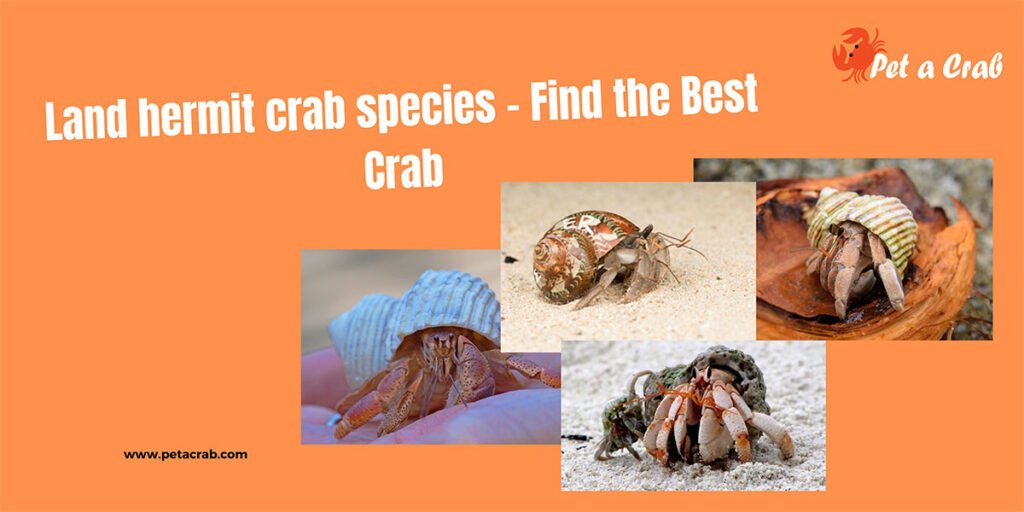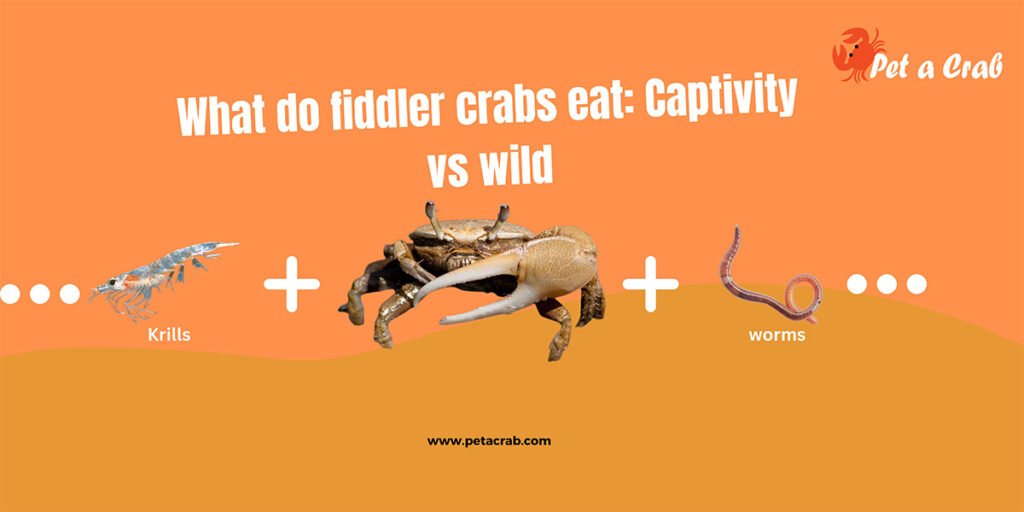The rainbow crab is a popular crab that is semi-terrestrial and easy to care for. This can help make them a great choice for beginner aquarists. Usually, they are not fully freshwater species. Besides, they are not fully aquatic. So that they are called fascinating pets. As a result, you get to enjoy them both on land and in water. They require water only on moist surfaces to refresh their gills.

In this details guide, I will cover everything about the rainbow land crab details you need to know when caring for and keeping them. Learn more about their natural habitat and care, along with helpful advice for your pet’s health.
What is a rainbow crab?
Rainbow crabs (cardisoma armatum), also known as land crabs, are semi-aquatic crustaceans. The species is native to West Africa. However, their alluring combination of aggressive behavior and vibrant colour sets them apart from other crab species, including the Patriot crab.
The little crabs are super scrappy and will attract their own. So they have gained the moniker “soapdish crabs” because they have to be packed in soap dishes. They can live up to 5 years and grow about 3 to 4 inches in size.

Scientific Classification Of Rainbow Crab
- Scientific Name: Cardisoma armatum
- Kingdom: Animalia
- Phylum: Arthropoda
- Class: Malacostraca
- Order: Decapoda
- Suborder: Pleocyemata
- Family: Gecarcinidae
Quick Overview of Rainbow Land Crab
- Type: Semi-terrestrial
- Tank Size: 20 gallon
- Keeping: Easy
- Breeding: Very difficult
- Optimal Temperature: 24–29°C
- Type of Aqurium: Paludarium
- Diet: Omnivores
- Temperament: Aggressive
- Life Span: Upto 5 years
- Common names: African Rainbow Crab, Tricolor Crab, Indigo Crab, Patriot Crab, Moon Crab, Halloween Land Crab, Soapdish Crab, and Harlequin Crab.
Key Characteristics Of Rainbow Crab
Natural Habitat
Rainbow land crabs are land crabs originating from the west coast of Africa. Also, they can be found along with the coastal regions in the river deltas and other brackish areas. As they age, their homes are burrows of sand that grow deeper and more complex. Although they can build deep colonies of tunnels. In captivity, male soapdish crabs grow territorial in the presence of other male crabs.
Appearance
The rainbow land crabs live up to their name and have vivid coloration. Particularly when they are young and, after the molting process, sporting a coat that is purple and blue. Besides, the legs and claws are orange and red. While the color fades before they molt and after age. Besides, it has a faded yellowish tinge. In captivity, their size is up to 3 to 4 inches. Also, their weight range is anywhere from 3.5 to 10.23 ounces.

Behavior
As adults, rainbow land crabs are solitary creatures. They will fight to the death on their own. They have sharp and super-strong claws. So be careful with your human skin. Moreover, if they do not get enough vegetables or diet, they can destroy aquatic and terrestrial plants. The Halloween land crabs spend the bulk of their time on land. So that they love burrowing.
Molting
The word molting means by which the Halloween land crabs increase in size. Usually, they last anywhere from a few weeks to a few months. But the frequency depends on their size and age. They absorb copious amounts of water that cause their upper shell to burst. Then they climb out of the carapace. The process takes time to complete within half an hour. In addition, if you notice that your little crabs lack energy and are declining food, that is a good sign that the molting process is imminent.
Feeding
The moon crabs are opportunistic eaters but sometimes cannibalistic. As they are omnivores and scavengers, they will appreciate a varied diet of fruits, flowers, vegetables, shrimp and leaves. The opportunistic behavior attacks smaller animals or consumes those that die in the tank. They show a high level of omnivore feeding habits in that they both feed on plant materials, fish fragments, sand grains, and unidentified items.
Breeding
The appearance of the eggs of indigo crabs would be preceded by molting. After mating, the female crab’s caries fertilised eggs beneath her body for 2–3 weeks. After that, she will make her way to the coast and release them into shallow waters. In the wild, the species produces 3,00,000–48,00,000 larvae, but few survive to become small crabs.
Lifespan
The Halloween crab usually survives for around 8 years in its natural habitat. But when you can keep them as pets, their average lifespan is 3 to 5 years.

Caring and Housing the Rainbow Crab
As I detailed above, the patriot crab requires a paludarium setup to satisfy its terrestrial and aquatic requirements. They also need fresh and brackish water. Here I provide the appropriate tank size and setup.
Land vs Water Ratio
The indigo crabs are usually referred to as land crabs; besides, they are found several kilometres away from the coast. In a tank setup, they should be provided with freshwater and brackish water at 5–10%. Besides, their environment should be 10–30% water so that they can keep their gills wet.
Substrate
The rest of the water should be filled with a combination of moist sand or mud into which they can burrow. You can use a substrate of pebbles, river rocks and other materials to climb into and out of the water.
Tank Size
If you want to keep them in a water-tight aquarium, at least 20 gallons are required for each crab. Besides, one male and one female may be kept together in the same aquarium of 40 gallons or more.
Temperature
Usually, the rainbow African crab prefers a warm habitat. So that the tank kept between 24-29°C would be within the correct range. Moreover, it is very important that the heaters and any other electronic elements be carefully hidden or placed out. So that they are exploring their environment peacefully.
#Frequently Asked Questions
Are rainbow land crab plants safe?
No, they are not plant-safe. They cut and eat all the things that get in the tank.
What is the feeding frequency of rainbow crabs?
Usually, you can feed them once a day and remove any leftovers. However, it is very important to keep in mind that they can drag and store food in their burrows.
Do rainbow crabs need water?
Typically, moon crabs are land crabs but they need water to moisturize and survive. The best way to provide them with both is to set up a paludarium that is half land and half water.
Are rainbow crabs aggressive?
Yes, they are aggressive, especially when they reach sexual maturity. They can be aggressive toward one another.
Related article – Matano crab



Good evening. I was wondering how to acquire on to canada? Thank you